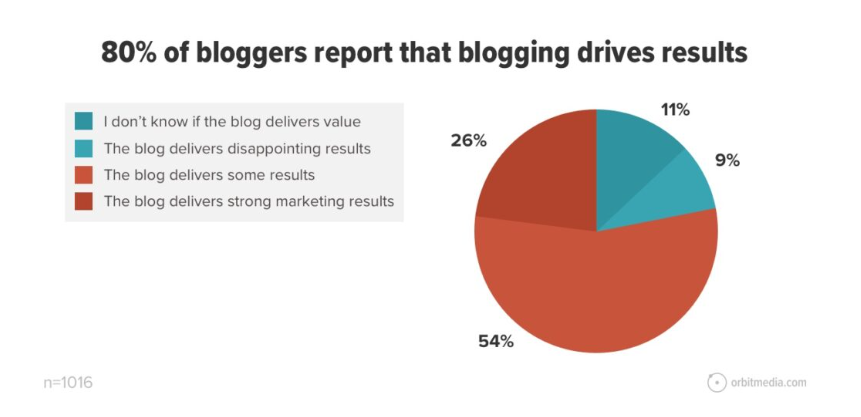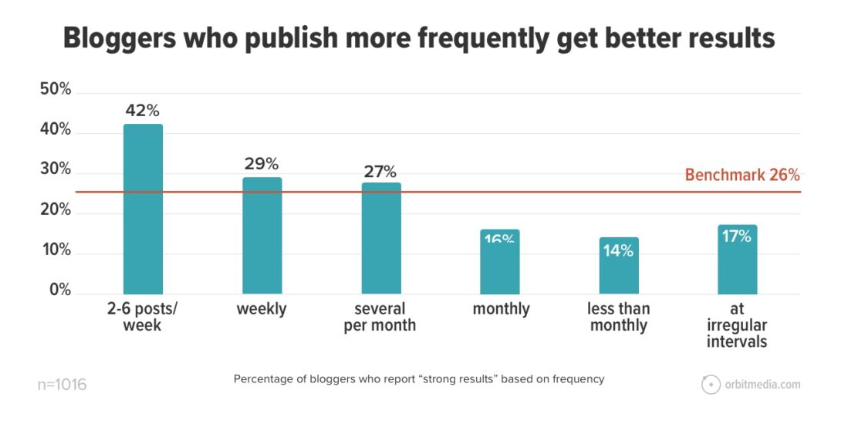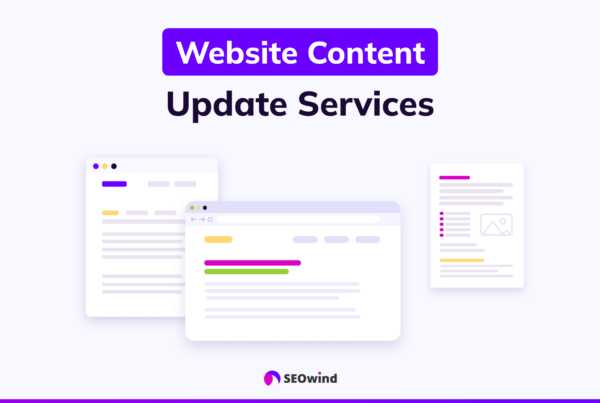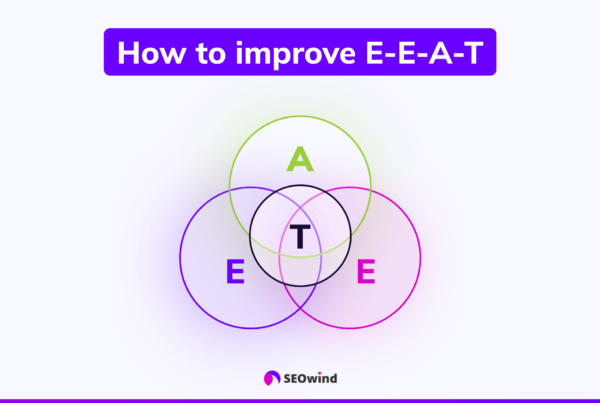Do you need help attracting readers and growing your blog traffic? You’re not alone. With millions of blogs jostling for user attention, it can be challenging for bloggers to stand out. Thankfully, there are actionable strategies that you can implement today to boost your blog’s visibility and appeal. In this comprehensive guide, we’ll explore tips, hacks, and examples that will teach you how to increase traffic on your blog effectively.
Introduction to Blogging
Blogging has gained significant traction over the past two decades as an essential communication and marketing tool. Today, businesses use blogs to share insights and connect with their customers. In contrast, individuals use them to express personal experiences or document growth journeys in specific niches.
At its core, blogging represents a powerful method to reach out and engage with readers by offering valuable content tailored specifically toward target audiences’ interests. As a blogger striving for success in a competitive digital sphere, it is paramount that you familiarize yourself with strategic approaches designed explicitly for increasing blog traffic.
If executed wisely, these proven methods will help maximize returns on your time investment in creating content while driving consistent reader engagement through targeted efforts to attract new visitors regularly. In turn, such exposure may open up various monetization opportunities, including advertising revenue streams or affiliate partnership programs, ultimately leading toward more sustainable income sources alongside heightened credibility within industry circles.
Let’s delve deeper into the dynamic blogging world by discussing the benefits of growing traffic on your platform and key tactics to propel your blog forward amid the stiff online competition!
Benefits of Increasing Blog Traffic

Increasing blog traffic is essential for a variety of reasons. By driving more visitors to your blog, you can amplify your reach, strengthen your online presence, and generate various forms of value from growing an engaged audience. In this section, we will dive into the key benefits that come with higher traffic on your blog:
Broaden Your Audience Reach
By effectively increasing traffic on blog platforms, you can connect with a larger group of potential readers who could become loyal followers or subscribers. This exposure translates into increased credibility and authority within your niche or industry.
Expand Opportunities for Revenue Generation
More page views can increase advertising opportunities through banner ads, sponsored content partnerships, or affiliate marketing programs. As you attract more people to visit your blog regularly, monetization strategies become more effective and revenue-generating.
Boost Search Engines’ Visibility
Enhanced search engine visibility is one of the best ways to increase blog traffic organically. Increased user-generated comments and social shares improve rankings in organic search results, from Google and other search engines.
Foster Community Engagement and Growth
A steady stream of high-quality content that resonates with readers can lead to active engagement within your blogging community. The natural desire for users to share valuable posts via word-of-mouth or social media helps build brand advocacy while fostering meaningful relationships between those deeply rooted in your subject matter.
Strengthen Your Authority and Influence
Professionals intent on becoming recognized thought leaders should prioritize increasing their overall blog visibility: how-to articles containing actionable insights give them leverage among like-minded individuals; genuine testimonials emphasize credibility; killer headlines inspire fascination and compelling re-tweeting urges among devout fans – each tactic enhances perceptions about the skill sets they wish audiences would recognize them by!
Learning how to increase traffic on blog platforms is crucial for bolstering our digital footprint – particularly regarding online content marketing efforts. Achieving success in these areas can foster growth, expand business opportunities, and solidify your reputation as a thought leader within your niche industry.
Blog Traffic Statistics
Understanding relevant blog traffic statistics can provide valuable insights while implementing strategies to increase traffic on your blog. This data not only help benchmark the performance of your blog but also allows you to spot valuable trends and patterns in user behavior.
Global Blogging Trends
- There are 600,000,000 blogs on the internet today (WebsiteSetup.org, 2021)
- To date, there are more than 600 million blogs out of 1.9 billion websites in the world. Their authors account for over 6 million blog posts daily, or over 2.5 billion annually (Hosting Tribunal, 2022).
- WordPress users produce about 70 million new posts each month. (WordPress, 2022)
- 20 billion WordPress pages are viewed by over 409 million people each month. (WordPress, 2022)
Blogging results
- 26% of bloggers say that blogging drives strong marketing results for their business. (Orbit Media, 2022)

Blogging frequency
- 22% of worldwide bloggers post on a weekly basis. (Statista, 2021)
- In 2022, 29% of bloggers published new posts on a weekly basis. The bloggers who publish 2-6 times per week are 50% more likely to report strong results. (Orbit Media, 2022)

💡 More Resources on Blogging Statistics and SEO Stats: 1. 100+ Latest Content Marketing Statistics for 2023 2. 60+ SEO Statistics, Facts & Data for Marketers for 2023
Strategy Types How to Increase Blog Traffic Quickly
In the crowded blogging world, attracting readers can take time and effort. Learning how to increase traffic on blog platforms is crucial to enjoying success. To accomplish this, you must have a well-crafted strategy targeting different aspects of your blog’s traffic growth. Let’s explore some of the essential categories of strategies that allow you to increase blog traffic quickly and efficiently.
Content Optimization
Creating high-quality content that resonates with your target audience is a significant factor in driving traffic to your blog. Achieving this requires research into relevant topics, incorporating long-tail keywords effectively, crafting click-worthy headlines, and optimizing the overall structure of your posts. Additionally, monitor trends and update or repurpose older material when applicable to maintain relevance.
Engagement & Promotion Methods
Once you have created captivating content, it’s time to work on promoting it through various channels:
- Leverage social media platforms by sharing your posts and engaging with potential readers.
- Reach out to influencers within your niche for collaboration opportunities.
- Conduct interviews or feature guest bloggers in order not just strictly self-promote yourself.
- Utilize email marketing campaigns targeting subscribers who are genuinely interested in what you write about.
Combining these methods with consistency expands your reach and draws more readers toward your blog.
Building Connections within Your Niche
Foster relationships with other bloggers or influencers within your niche through mutual promotion efforts such as link exchanges or cross-promotion via newsletters. Engaging with respected voices in the field bolsters credibility while increasing traffic on blog sites—a win-win situation! Moreover, consider writing reviews or conducting interviews relevant to your expertise. These features often pique interest among audiences searching for valuable information.
Technical Optimization
Lastly, ensure that technical aspects like website load speed, mobile optimization (since most people access the internet on their phones), and responsive design are in place. Faster-loading websites provide a better user experience, which leads to increased page views and shares.
Optimizing your blog for search engines using the appropriate meta tags, descriptions, and keywords enables Google’s algorithms to index your content better. In turn, this can positively impact your ranking on SERPs (Search Engine Results Pages) — ultimately helping you increase blogger traffic steadily.
Strategy 1: Use SEO Strategy & Tools to Optimize Your Blog Posts

One of the most important strategies to increase traffic on your blog is Search Engine Optimization (SEO). SEO techniques help your blog rank higher in search engine results, making it more visible to potential visitors. By leveraging various tools and resources available for bloggers, you can improve your blog’s online presence and drive traffic.
Optimize Content for SERPs

Thomas Fuller, Digital Marketing Consultant, Thomas P. Fuller
One effective method for increasing traffic on my blog is to use the Google Search Console to find keywords that are ranking in positions #11+ of search engine results pages (SERPs), pick one, and then focus on improving the content for the article that this specific keyword applies to.
The rationale behind this method is as follows: according to one study I’ve read, positions #1 through #3 on the first page of SERPs will typically receive, in total, around 68.7% of search traffic from the Google Search Engine, whereas positions #4 through #10 will receive the remaining 31.3% of search traffic; after the first page of SERPs, traffic for a given keyword drops significantly.
With this in mind, if an article is already ranking for a keyword that is near that first page of search engine results, then our goal is to simply get it to appear on that first page consistently, and then we should see a positive improvement in traffic as well.
Incorporate keywords
One effective way to improve a blog post’s visibility is to include appropriate keywords in the content. This helps search engines understand the post and ensure they display it as a relevant result when users search for those terms. As you learn how to get more blog traffic, keep these best practices in mind:
- Use target keywords 3-5 times naturally throughout the article’s body.
- Include at least one primary keyword (a.k.a., the main topic) and several secondary or long-tail keywords (more specific subtopics)
- Place primary keywords in strategic locations such as title tags, meta descriptions, headings/subheadings, the first paragraph of content, and image alt tags.
Why Do Long-Tail Keywords Matter for Bloggers?
Long-tail keywords are longer, more specific keyword phrases highly relevant to the searcher’s intent. They are crucial in driving organic traffic due to lower competition and higher conversion rates than short keywords. Here are some reasons why long-tail keywords matter for bloggers:
- Less Competition: Longer phrases typically have less competition, increasing the chances of ranking higher in search results.
- Higher Conversion Rates: People using long-tail keywords know precisely what they’re looking for, leading to increased engagement on your blog.
- Better Target Audience: It allows you to target a niche audience interested in the specific topics covered by your articles.
- Greater Relevance: Content structured around long-tail keywords often resonate with readers since it caterers directly to their needs or question.
SEO for Bloggers: Finding Long Tail Keywords
Finding suitable long-tail keywords can be essential in optimizing your content for search engines and increasing blog traffic. Below is a step-by-step process to discover these valuable long tail keyword phrases:
- Brainstorm Keyword Ideas: Create a list of topic ideas related to your niche or industry focus. Consider the problems you solve or questions frequently asked by users in this category.
- Use Keyword Research Tools: There are several excellent tools available online, like Google Ads’ Keyword Planner, Ahrefs’ Keyword Explorer, and Moz’s Keyword Explorer, among others, that can assist you in finding relevant long-tail keywords.
- Analyze Competitor Keywords: Explore competing blogs or websites and identify the long-tail keywords they rank for. This can help you discover less competitive phrases you can use to drive more traffic to your posts.
- Examine Search Engine Auto-Suggest: Google’s auto-suggest feature is an excellent resource for discovering potential long-tail keyword ideas. Type in your target short keyword and let the search engine suggest longer phrases users search for.
- Keep Your Focus on User Intent: Ensure that long-tail keywords genuinely align with users’ needs and address their problems or queries. Understanding user intent will translate into valuable blog content that captures and maintains reader interest.
Implement Local Keywords

Loren Howard, Founder, Prime Plus Mortgages
One effective method we have used to increase traffic on our blog is implementing local keywords and optimizing our content for local search. By targeting specific locations and incorporating relevant keywords related to those areas, we were able to attract a highly targeted audience interested in local real estate and investment opportunities.
This strategy not only improved our organic search rankings but also allowed us to connect with individuals who were actively seeking information about real estate in their local market.
Incorporate links
Incorporating both internal and external links within your blog posts serves multiple purposes:
- Internal links connect readers with other valuable content on your website. By doing so:
- You create a seamless user experience that encourages people to explore further.
- You also help search engine crawlers navigate through your site structure more efficiently.
- External links guide readers toward authoritative sources related to your content:
- Citing reputable sites improves the trustworthiness and credibility of your blog.
- It supports claims with evidence or data from reliable sources.
When incorporating links into your content, use descriptive anchor text containing relevant keywords that provide context for human readers and search engine algorithms.
Get quality backlinks
High-quality backlinks remain essential in improving search rankings – they’re seen as votes of confidence for your site from other credible online sources. As you explore how to increase traffic on your blog, consider these methods for obtaining quality backlinks:
- Guest posting: Write informative articles on other websites within your niche and include an author bio with a link back to your blog
- Influencers outreach: Collaborate with social media influencers or famous bloggers in your industry who may share your content (and thus link back) with their audience
- Interviews: Conducting interviews with respected personalities in the field can lead to them sharing the interview on their platforms
- Original research: Share valuable findings unique to your study, which may prompt others to reference and link back to it when discussing a related subject
Focusing on these three key optimization strategies will help search engines index and rank your blog posts and foster user trust – ultimately leading to increased blog traffic.
Strategy 2: Write Long-Form Content
Crafting long-form content is one effective strategy to increase your blog traffic. Lengthier and more detailed articles provide value to readers, encourage longer time spent on your website, and appeal to search engines.
Benefits of Writing Long-Form Content
There are several advantages when you choose to write in-depth articles:
- Higher engagement rates: Engaging long-form content captures the readers’ interest and convinces them to continue reading or explore other related articles on your blog.
- Improved SEO: In-depth posts often address a broad range of subtopics within one piece, giving search engines like Google an increased number of keywords that can rank well.
- Authority building: Knowledgeable and comprehensive posts demonstrate expertise within your niche; hence, they help establish credibility among peers and target audiences.
Tips for Creating Effective Long-Form Content
For successful long-form articles that attract reader attention and drive traffic to your blog, consider the following tips:
- Focus on relevant topics: Select subjects pertinent to your audience’s needs or interests for maximum relevance and usefulness.
- Write with quality in mind: Strive for grammatical precision, language clarity, proper formatting, logical coherence, and accurate information citations from reputable sources.
- Maintain readability: Break up large blocks of text using headings, subheadings, bullet points, images, or visual aids so readers can quickly scan the article.
Remembering these tips while creating detailed pieces will draw new visitors through organic searches and keep old ones coming back for more insightful content.
Examples of Successful Long-Form Content Posts
Some exceptional examples of long-form content across various niches include:
- Brian Dean’s guide ‘The Definitive Guide To SEO In 2023:’ This comprehensive post covers several SEO aspects for beginners and experts with step-by-step explanations and strategies for better search engine optimization.
- The Ahrefs Blog’s ‘How to Learn SEO’: Here, the author compiles various resources, including articles, courses, videos, and podcasts, offering valuable content targeted at an audience eager to improve their SEO knowledge.
By studying these examples and utilizing the tips mentioned earlier, you can develop long-form content that appeals to readers and boosts your blog traffic significantly.
Prioritize Quality Content


Vikrant Shaurya, CEO, Authors On Mission
One effective method I have used to increase traffic on my blog is to consistently create high-quality, engaging content.
By delivering valuable information, captivating storytelling, and addressing the needs of my target audience, I attract readers and keep them coming back for more. Additionally, I optimize my content for search engines, leverage social media platforms for promotion, and actively engage with my readers through comments and discussions. By focusing on quality and strategic promotion, I have successfully grown traffic on my blog.
Strategy 3: Blog Post Frequently
Publish content frequently. Posting regularly keeps your readers engaged and attracts new visitors to your site. Search engines also favor websites that constantly update their content, which can lead to improved visibility and higher rankings in search results.
Benefits of Frequent Posting
Frequent posting has numerous benefits for bloggers:
- Builds brand authority: Regularly publishing quality content establishes you as a thought leader in your niche and boosts credibility among readers.
- Keeps readers engaged: Higher engagement could translate into more shares and discussions around your blog, drawing more attention and potential subscribers.
- Increases blog’s visibility: Search engines consider the frequency of updates when ranking websites, meaning frequent posts can improve the chances of being discovered.
- Cultivates an active community: Regular interactions with your audience foster trust and encourage communication between you and your target market.
However, be cautious not to sacrifice quality over quantity – it’s crucial to maintain a balance between producing high-quality content that provides value while meeting the desired posting frequency.
Find the Ideal Posting Schedule
The optimal posting schedule varies depending on factors such as niche focus, the competitiveness of the topic, target audience demographics, and personal preferences. To find the ideal plan for how to drive traffic to your blog:
- Track analytics data: Use tools like Google Analytics or other website analytics platforms to measure performance indicators related to post frequency.
- Analyze competitors’ schedules: Study well-performing blogs within your niche for insights on effective publishing frequencies.
- Experiment with different schedules: Test varying publication intervals (daily or weekly) to identify what works best for driving traffic to increase blogger traffic consistently.
As you iterate through these steps, make necessary adjustments based on reader feedback or shifts in visitor behavior patterns- keeping close tabs on trends enables you to strike a balance that works best for getting traffic to your blog.
Tips on Posting Frequently
Consistently maintaining a high post frequency while sustaining quality can seem challenging. However, with proper planning and time management, you’ll be able to get more blog views effectively:
- Set attainable goals: Outline a realistic posting schedule incorporating guidelines for various types of content (e.g., in-depth articles, quick tips, or news updates).
- Utilize an editorial calendar: Organize your posts, ideas, deadlines, and promotional activities using Trello, Asana, or Google Sheets.
- Batch writing sessions: Dedicate blocks of time for writing multiple articles at once to increase efficiency and maintain consistency in style or tone.
- Automate publication processes: Use technology platforms such as WordPress or Hootsuite to schedule articles ahead of time.
By implementing the strategies outlined above, you will ultimately find how to increase traffic on your blog through consistent and frequent posting. This creates value for new and returning visitors while also helping improve search engine rankings. With determination and thoughtful consideration of the needs and preferences of your target audience members over time, a frequent posting strategy is likely to drive success.
Strategy 4: Leverage Social Media


Social media is a powerful tool for increasing traffic on your blog. With billions of daily active users across various platforms, you can significantly boost your visibility and engage with a broader audience. Mastering social media promotional techniques is crucial in your quest for increased blog traffic.
Leverage Social Media Promotion


Josh Amishav, Founder and CEO, Breachsense
One effective method I’ve used to increase blog traffic is social media promotion. We create engaging and shareable content with attention-grabbing headlines and visuals.
By sharing the blog posts on Twitter and LinkedIn, using captivating hooks and relevant hashtags, we expand our reach and visibility. Active participation in communities and groups helps build relationships with potential readers. Collaborating with influencers in our niche further amplifies the content.
By leveraging social media promotion, we’ve been able to reach a wider audience and drive more traffic to our blog.
Optimize Your Blog’s Social Sharing Features
To drive more traffic to your blog through social media, ensure your website or content management system has built-in social sharing buttons. By making it easy for readers to share your content, you increase the potential reach of each post. Editorially select snippets and quotes that would provoke interest if shared on social networks like Twitter, Facebook, or LinkedIn.
Build a Robust Social Media Presence
Developing an active presence on several top social media platforms (Facebook, Twitter, Instagram, Pinterest) is imperative. Tailor your content appropriately for each platform – engaging images for Instagram or brief text discussions for Twitter – keeping the following tips in mind:
- Share newly published posts promptly,
- Repost evergreen content periodically,
- Use scheduling tools like Buffer or Hootsuite,
- Engage with followers regularly.
Participate In Niche Groups And Communities
Being an active contributor in online niche groups and communities related to your blog subject matter demonstrates industry knowledge while directing more people toward your site as they become interested in what you have to say. These groups often exist on Facebook, LinkedIn, Google+, and Reddit, among others.
Creating Share-Worthy Content
Ensure that all future posts are tailored explicitly for shareability—by addressing current trending topics and investigating various formats such as infographics, narrative anecdotes, and photo essays. Incorporating new virtual media types ensures your blog posts stand out and entice more shares. Generate curiosity with appealing headlines, but remember not to overpromise and underdeliver.
Influencer Outreach
Social media influencers can be a potent ally in your efforts to increase blog traffic. Reach out to those who align with your niche, offering collaborations or asking for their input on a subject matter that resonates. By gaining the endorsement of such influencers, your content reaches new audiences who are more likely to visit your blog.
Strategy 5: Leverage Influencers


Influencers have become a powerful force in various industries, including blogging. They hold sway over the opinions and preferences of their audience due to their expertise, reputation, and charisma. Leveraging influencers is a great way to increase traffic on your blog, as they can effectively introduce your content to a broader audience.
Build Relationships with Influential Bloggers in Your Niche
To tap into the power of influencer marketing:
- Start by identifying influential bloggers who share similar interests or are experts in your niche. You can find them through search engines, social media platforms, or even guest posts on other blogs.
- Focus on building authentic relationships with these opinion leaders by engaging meaningfully in conversations on their blogs or social platforms.
- Share their content and provide value through meaningful comments that showcase your expertise.
Partner with Influencers for Guest Posts or Collaborations
Once you’ve established a rapport with key influencers in your niche, consider exploring collaboration opportunities such as guest posting on each other’s blogs or creating joint content like interviews or expert round-ups. This partnership allows both parties to benefit by:
- Expanding reach across new audiences
- Boosting credibility among readers
- Facilitating mutual knowledge sharing
Choose partners strategically based on factors like the level of user engagement they generate and whether their target demographic aligns with yours.
Analyze and Replicate Proven Strategies Used By Successful Influencers
Observe what tactics leading influencers employ when promoting their brand online. Some common strategies include:
- Hosting webinars on industry-related topics
- Engaging with followers through responses to comments
- Utilizing email lists for targeted content dissemination
- Regularly sharing valuable tips via social media channels
Apply any proven methods discovered during this process to your promotional efforts as modifications explicitly tailored for your unique blog.
Reach Out for Influencer Testimonials and Social Proof
Authentic testimonials from influential personalities can be a game-changer for driving traffic to your blog. If you have established a meaningful connection with an influencer or provided value through your content, try reaching out for that endorsement or sharing of your work. With their approval, include these mentions prominently on your site as social proof to demonstrate credibility and attract like-minded audiences.
In conclusion, leveraging influencers is a powerful strategy to increase traffic on your blog. By identifying key figures in your niche, building relationships with them, creating shareable content together, and harnessing their promotional strategies, you stand to make significant headway in growing both readership and engagement rates.
Strategy 6: Conduct Interviews


Conducting interviews with industry experts and influencers is a highly effective way to increase traffic on your blog. This strategy adds variety to your content and provides valuable insights and knowledge from experienced professionals in your niche. Furthermore, it allows you to connect with new audiences by leveraging the interviewee’s network of followers.
Benefits of Incorporating Interviews into Your Blog
- Increased credibility: Featuring interviews with respected industry leaders can elevate your blog’s authority while strengthening the perceived value of your content.
- Expanded network: Connecting with experts in your niche leads to potential partnerships, guest posting opportunities, or collaborative projects that drive traffic to both parties’ blogs.
- Attract new readers: The interviewee’s established audience may be inclined to visit your blog when you share their insights on various topics relevant to your target market.
- Diverse perspectives: Engaging different voices allows readers to appreciate multiple viewpoints within the subject matter at hand.
How to Conduct Effective Interviews
To maximize the impact of incorporating interviews into your blogging strategy, follow these steps:
- Select relevant experts: Reach out specifically to knowledgeable and respected individuals in areas related directly or indirectly to your niche.
- Develop engaging questions: Ask thoughtful questions tailored for each individual; ensure they relate heavily to increasing readers’ expertise on a specific topic.
- Format appropriately: To make consuming interviews easier for visitors, consider presenting them through varied formats such as written text, podcasts, or video recordings.
When conducting an interview, always show gratitude for the participant’s time and contributions by providing them with links or mentions where appropriate; this will encourage a positive attitude toward future collaborations.
Promote Your Interview Content Effectively
Once you’ve conducted an insightful interview, take advantage of available promotional channels:
- Share snippets and quotes from the discussion on social media to pique readers’ interest.
- Notify your email list, giving them an exclusive look at the new content.
- Leverage any related communities or forums where your and the interviewee’s audiences participate.
By conducting well-researched interviews with individuals who can provide valuable knowledge to your audience, you will create diversified content and enhance credibility within your industry. Deliberately promoting these interviews can attract loyal followers of the individual featured and grow a broader network of engaged readers – ultimately driving more traffic to your blog.
Strategy 7: Write Reviews


Why Writing Reviews Can Increase Traffic on Blog
One proven approach to boost your blog traffic is by writing reviews. Reviews are a powerful form of content that can help you in several ways:
- Build credibility and trust: When you write detailed, honest, and unbiased reviews about products or services relevant to your niche, it demonstrates your expertise. This positions you as an authority in the industry, makes readers trust your opinion and encourages them to visit your blog regularly.
- Rank high: By incorporating long-tail keywords related to the product/service being reviewed, you have better chances of ranking higher on search engine results pages (SERPs). Search engines consider user intent when determining where to rank blogs for particular queries.
- Attract targeted traffic: Potential customers researching a specific product or service will likely discover your review while searching online. The more targeted visitors you attract with reviews, the higher the likelihood they’ll engage with other content on your site.
- Promote affiliate marketing: Many bloggers use reviews as a part of their affiliate marketing strategy to earn commissions from the sales generated through their referral links. Providing value through trustworthy and informative product or service recommendations can significantly increase traffic and revenue.
Tips for Writing Effective Blog Reviews That Drive Traffic
Below are some essential tips to keep in mind when crafting review articles that’ll bring in more visitors:
- Research extensively: Before writing a review, familiarize yourself with every product or service aspect. Read existing user feedback, gather data from reliable sources, and identify common pain points among users — all these steps will ensure that your review isn’t biased or misinformed.
- Write with objectivity: Offer impartial evaluation and focus on providing valuable insights rather than simply promoting the item being reviewed. Give readers information about the pros and cons so they can make informed decisions based on your analysis.
- Be comprehensive: A well-rounded review should cover the key features, benefits, costs, comparisons with competitors, and anything else that might be relevant in assessing the product or service. Ensure you answer most users’ queries to make your reviews thorough and more appealing.
- Format appropriately: Break up long text sections with headings and subheadings to improve readability. Use bullet points or numbered lists when necessary to describe specific aspects of the reviewed item.
- Optimize for SEO: Incorporate relevant long-tail keywords naturally throughout your review content without appearing forced or unnatural. This will help your post rank higher on search engine result pages and attract more targeted traffic.
Incorporating the practice of writing reviews into your blogging strategy can dramatically increase traffic on your blog while boosting its credibility. Offering valuable insights into products or services through honest evaluations encourages readers to trust your recommendations and refer others to your site for information.
Strategy 8: Write Guest Posts


One of the most tried-and-true methods for learning how to increase traffic on your blog is guest posting, which involves creating original content and contributing it to other websites or blogs in your niche. This can help you gain exposure and build a name for yourself as an authority within your field. Following are some key points explaining why writing guest blog posts should be considered as a go-to strategy when aiming for blog traffic increase:
Expanding Your Reach and Building Relationships
By sharing valuable content on relevant platforms, you’re exposing your work to their audience and building relationships with editors, authors, and influencers who often have substantial online followings. These connections can lead to future collaborations or even opportunities to participate in interviews or podcasts, further increasing your reach.
Enhancing Credibility
When readers see that reputable websites have published your work, they are more likely to view you as trustworthy and knowledgeable. This credibility might encourage them to explore your blog out of curiosity or interest in additional insights from an expert source.
Boosting SEO Efforts
Featuring high-quality content on authoritative sites can improve link juice (the value passed from one page or site to another through hyperlinks), positively affecting search engine rankings. Many guest post platforms allow including a link back to the author’s website, thus making sure more quality backlinks direct towards your website, leading to higher ranks in search results.
To effectively leverage guest posting strategies, consider these tips:
- Identify blogs or websites relevant to your niche where the audience will likely be interested in what you have been writing.
- Conduct thorough research before crafting articles explicitly tailored for those publications – ensure they convey insight consistent with their editorial guidelines yet still offer unique perspectives.
- Make efforts to engage with commenters on each piece shared beyond just replying courteously; show genuine appreciation for their support while addressing any questions or concerns raised.
Overall, writing guest posts enables you to showcase your expertise and reach a wider audience while building valuable connections within the industry. By crafting high-quality content that resonates with readers, you’ll be well on your way toward increasing traffic on your blog in no time.
Strategy 9: Create more quality content with AI
If you want to drive more organic traffic, create more relevant content. Scaling content can be a challenge though. This is where AI can be of great help. Artificial intelligence is revolutionizing the way we scale content.
Learn about The Cyborg Method, a powerful combination of machine learning and human expertise, that can help you streamline your content creation process and unlock new levels of growth.
💡 More Resources on Blog Post Content Length 1. AI Article Writing with ChatGPT – Cyborg Method [eBook with tested prompts] 2. Unlock Growth with Content Scaling Strategies [powered by AI]
Strategy 10: Be Strategic About Your Content


To effectively increase blog traffic, it’s crucial to be strategic about your content. You can boost reader engagement, improve search engine rankings, and foster long-term growth by crafting valuable and relevant articles tailored to your audience’s interests and needs.
Create Evergreen Content For Your Blog
One way to ensure long-lasting relevance is by focusing on evergreen content. Evergreen topics maintain value over time because they address fundamental aspects of your niche that readers will always find helpful. This type of material contributes significantly to increasing blog traffic for these reasons:
- Increased organic traffic: As evergreen content remains relevant, search engines rank these posts favorably, directing more organic visitors.
- Shareability: Readers are more likely to share practical and enduring information with their network on social media or other platforms.
- Reduced workload: Focusing on producing timeless pieces means less time spent updating outdated content.
- Better online visibility: These high-quality resources attract backlinks from authoritative websites, further boosting your SEO performance.
To create compelling evergreen content:
- Identify core topics within your niche that continually generate interest among readers.
- Research extensively before writing the article; this will help present in-depth, accurate information appreciated by both users and search engines.
- Make a conscious effort to avoid including specific dates or events that may cause your post to seem outdated in the future. Keep the language as timeless as possible.
- Update evergreen posts occasionally with new information or insights when necessary.
By incorporating evergreen content into your blogging strategy, you’ll not only enhance the overall value of your website but also see sustained increases in organic blog traffic over time. This approach positions you as an authority in your niche while helping drive consistent growth for lasting success—ultimately fulfilling how to increase traffic on blog goals!
Strategy 11: Grow Blog Traffic Using Email Marketing


One of the most effective ways to increase blog traffic is by leveraging email marketing. With a robust email marketing strategy, you can reach your audience directly, nurture relationships, and convert readers into loyal followers. In addition, this technique increases the probability of recurring visits and helps drive traffic back to your blog.
Build an email list
- Choose a reliable email service provider: Choosing a reputable and user-friendly email service provider (ESP) that caters to your need is essential. A great ESP should offer list management tools, automation capabilities, ready-to-use templates, analytics, and deliverability support.
- Create high-quality lead magnets: Lead magnets are resources or incentives provided in exchange for the user’s contact information – typically their email address. Some examples of effective lead magnets include eBooks, webinars, free courses, checklists, and exclusive content pieces not available elsewhere on your site.
- Use engaging opt-in forms: Your form is crucial in convincing visitors to join your mailing list. It must be visually appealing and accompanied by a persuasive copy explaining the benefits they would receive upon subscribing.
- Promote your newsletter sign-up through various channels: Utilize different online platforms, such as social media profiles or guest posts, to advertise your newsletter subscription service to extend its reach further.
- Segment your email list: Divide your subscribers into smaller segments based on their preferences or behavior so that you can send targeted content tailored for each group – ensuring a higher open rate and better reader engagement.
- Send valuable content: Avoid sending generic news updates; instead, focus on sharing value-driven messages which resonate with those who subscribed explicitly because they were interested in what you have to say about specific topics.
- Balance promotions with helpful content: Although promoting your latest blog posts is essential, make sure it’s balanced with valuable content that helps your subscribers solve a problem or learn something new. This approach keeps them engaged and looking forward to your email updates.
By leveraging the power of email marketing, you’ll be able to connect directly with your audience, thus increasing blog traffic over time. Additionally, cultivating and maintaining a healthy email list is a significant asset, as it allows for better communication between you and your readers – keeping them in the loop on your latest blog updates while supplying valuable insights through targeted messages they genuinely appreciate.
Strategy 12: Promote Your Blog on Other Platforms
Promoting your blog on other platforms can be a powerful way to increase traffic on your blog. Expanding your presence beyond just your own website and social media profiles, you’ll reach new audiences and boost visibility for existing and potential readers. In this section, we will cover various avenues that you should consider for promoting your content, including forums, Q&A websites, online communities, and niche platforms.
Participate in Forums and Online Communities
Online forums and communities are excellent spaces where people gather to discuss topics of interest. If relevant to your niche, participating in these conversations can drive traffic to your blog by providing value through answering questions or sharing expertise with others who share similar interests.
Some popular discussion forums include:
- Quora
- Stack Exchange
- Industry-specific message boards
By contributing well-reasoned answers with links to related articles from your own blog, when appropriate (avoid blatant self-promotion), you can establish yourself as an authority on the subject matter and generate organic traffic.
Engage with Q&A Websites
Q&A websites like Quora provide an excellent platform for experts to answer questions about specialized topics posed by community members. By searching for questions within your domain of knowledge and giving thoughtful responses incorporating insights from your work or blog posts, you will draw the attention of interested readers seeking further information.
Track which types of questions generate the most interest so that you might recognize potential trends or opportunities for future blog content ideas.
Target Niche Content Aggregators
Content aggregators, like Feedly or Flipboard, help users curate their favorite blogs into one app or website. Submitting your blog’s RSS feed link(s) through these platforms’ submission processes may increase reader engagement by simplifying their experience of finding new content they enjoy.
Collaborate with Related Blogs
Lastly, seek collaborative partnerships with other like-minded bloggers in your niche. This could include exchanging guest posts, running joint events or giveaways, co-publishing original research, or linking to each other’s content where relevant.
By doing so, both parties benefit from cross-promotion and increased exposure to each other’s audiences, leading to better growth across the board.
In conclusion, by promoting your blog on various platforms outside your website and social media profiles, you can reach new readers and contribute helpful information where it might not otherwise be found. Always remember to provide value first. Self-promotion should come as an incidental bonus rather than a primary goal. Maintaining this mindset will increase your chances of boosting traffic and establishing yourself as an authority within your area of expertise.
An often overlooked strategy for driving traffic to your blog is creating highly shareable images. These eye-catching visuals can help make your content stand out on social media platforms, encouraging users to click and read more.
This section explores the benefits of shareable images, tips for creating them, and tools that can help you craft compelling visuals.
Benefits of Shareable Images
Shareable images have several advantages:
- Convey complex ideas efficiently: They say a picture is worth a thousand words. A well-designed image can quickly convey a message or concept in a way that is clear and easy to understand.
- Increase engagement: According to research by BuzzSumo, articles with an image once every 75-100 words receive double the social media shares as those without images.
- Boost SEO efforts: Alt text and metadata from relevant visual elements also contribute to optimizing your blog’s search engine ranking.
Tips for Crafting Shareable Images
Here are some suggestions on how to optimize your images for sharing:
- Create unique, visually appealing designs that command attention.
- Ensure the images complement your written content by enhancing its meaning or adding valuable information.
- Utilize contrasting colors and easily legible font types and sizes to maximize readability.
- Add emotional appeal through photographs or illustrations that evoke feelings in users – such as curiosity, surprise, happiness, or other triggers which compel viewers to engage with your content.
- Include branded elements like logos or specific color schemes consistently throughout your visual assets for better brand recognition.
Incorporate Unique Images and Graphics


Will Bourne, SEO Consultant, GrowRoom
Google loves unique images and graphics.
As well as making your content more engaging and helping it to rank organically, they can drive traffic through Google Images, attract backlinks from other sites that use them, and increase trust in your brand.
It can be fairly cheap to create great custom graphics too. Utilize sites like Fiverr and give a graphic designer your brand guidelines, key information to include, and a couple of ideas or similar examples.
Tools for Creating Compelling Visuals
There are various online tools available—both free and paid—that can assist you in designing compelling, shareable images:
- Canva: a user-friendly graphic design tool with pre-made templates allowing you to create professional-quality visuals effortlessly.
- Snappa: Helps users generate customized graphics with adjustable dimensions suitable for specific social media platforms.
- Adobe Spark: Offers free and premium plans for creating visually striking images, graphics, and short videos.
- Visme: A sophisticated design tool that enables you to create interactive visuals like infographics, presentations, and animations.
Strategy 14: Craft “Click-Worthy” Headlines


In today’s fast-paced digital world, capturing the attention of your target audience is crucial for increasing blog traffic. One way to achieve this is by crafting “click-worthy” headlines that instantly grab your reader’s interest and entice them to click on your blog post. A well-crafted headline generates curiosity and provides a clear idea of what the reader can expect from the article.
In this section, I’ll share some tips on how to craft irresistible headlines.
Understand Your Audience
Before diving into creating captivating headlines, it’s essential to understand who your target audience is and what types of content they enjoy reading. Knowing their preferences will help you tailor your headlines accordingly and increase the likelihood of driving traffic to your blog. You can use various analytical tools or conduct surveys to understand your readers’ interests and preferences better.
Keep It Clear and Concise
A great headline should be crystal-clear, concise, and accurately represent the content of your blog post. Avoid using unnecessarily complicated words or jargon. Use simple language that resonates with a broader audience. Being upfront about what readers can expect from an article also helps build trust between you and them.
Make Use of Power Words
Powerful words hold great potential to evoke emotions in readers and push them to take action. Examples include “amazing,” “incredible,” “proven,” “shocking,” or even something as simple as “free.” These words are known for grabbing attention when used sparingly and appropriately within a headline.
Utilize Numbers
Studies have shown that incorporating numbers in headlines attracts more clicks than without. Including data (like percentages or specific numbers) gives credibility to your claim while creating a sense of urgency or offering tangible value.
Here are some examples:
- 7 Proven Strategies on How to Increase Traffic on Blog
- 5 Simple Ways to Get More Traffic to My Blog
- Increase Your Blog Traffic by 127% Using This One Trick
Make Use of the FOMO (Fear Of Missing Out) Technique
Another tip for crafting engaging headlines is to leverage the Fear Of Missing Out technique. Creating a sense of urgency or scarcity tempts readers to click on your post to ensure you get all the valuable information.
For example:
- Discover How to Drive Traffic to Your Blog Before It’s Too Late!
- 10 Limited-Time Hacks for Getting Traffic to Your Blog – Don’t Miss Out!
A compelling headline plays an essential role in driving traffic toward your blog. Experiment with different styles and techniques until you find what works best for you and your target audience. An irresistible headline will not only help generate curiosity but will also lead to increased engagement, ultimately helping increase traffic on the blog.
Strategy 15: Repurpose Your Content
One of the most effective ways to increase traffic on your blog is by repurposing existing content. This involves reusing and adapting your existing blog posts into new formats or presenting them through different channels. Not only does this extend the lifespan of your valuable content, but it also increases its reach and visibility, ultimately driving more traffic to your website.
Benefits of Repurposing Content
Repurposing content provides various benefits for bloggers:
- Increased audience reach: By adapting content for different platforms or formats, you can target new audiences who may not have encountered your work otherwise.
- Maximized ROI: Creating quality content takes time and effort; repurposing allows you to maximize that investment by extending its value.
- Improved SEO: Diversifying your content can result in additional backlinks from different sources, further boosting your online presence and search engine rankings.
Ways to Repurpose Blog Content
There are numerous approaches when it comes to repurposing content for increased blog traffic:
- Transform written articles into visuals: Turn key points from a blog post into an infographic or video; visual representations often garner more engagement than text-based posts.
- Create a podcast: Expand on a topic covered in one or more blog articles by discussing it in a podcast format. This helps establish rapport as well as credibility with listeners.
- Develop slide presentations: Use platforms like SlideShare to create easily digestible PowerPoint-style summaries of informative blog posts.
- Host webinars: Break complex topics down during live Q&A sessions or workshops, allowing for audience interaction while cementing yourself as an authoritative figure in your niche.
Promote Your Repurposed Content
After repurposing existing content_, be diligent about promoting each version across appropriate channels to maximize exposure and drive traffic back to your blog. Some popular promotional strategies include:
- Sharing on social media: Reach out to diverse audiences by posting your repurposed content across various platforms, such as Twitter, Facebook, LinkedIn, and Pinterest.
- Optimizing for search engines: Ensure all adaptations of your content are SEO-friendly by incorporating relevant keywords, meta tags, and images with descriptive alt-tags.
- Collaborating with influencers or other bloggers: Share mutually beneficial content that resonates with a broader audience; this could involve guest blogging or cross-promoting via newsletter mentions.
Ultimately, the key to effectively repurposing content is creativity and strategic planning. By presenting information in various formats and channels, you’ll be able to reach expanded audiences while continually driving traffic back to your blog—effectively increasing both visibility and value over time.
Strategy 16: Get Your Content Included in Niche Newsletters
Including your blog content in niche newsletters is an excellent way to increase traffic to your blog. By leveraging well-established newsletters’ outreach potential and subscribers, showcasing your work can drive many targeted visitors to your site. Additionally, it helps establish credibility within your field by associating your content with respected industry publications.
Cross-promote to your mailing list
Cross-promoting your content to your mailing list is a strategy that goes hand-in-hand with getting featured in other niche newsletters. When readers see you’re featured, they’ll be more likely to read or engage with the content you send directly through email marketing efforts. Here are some tips on how to get started:
- Research: First, identify relevant newsletters within your niche that reach a substantial audience or have a high engagement rate.
- Connect: Reach out to newsletter creators or editors via email or social media platforms like Twitter or LinkedIn.
- Pitch: Present them with your best and most relevant content that fits their newsletter’s profile and audience interests.
- Collaborate: Develop mutually beneficial relationships where you can provide valuable content to these newsletters while receiving shout-outs, backlinks, or guest post opportunities with their platform.
While increasing blog traffic through this strategy takes time and effort – researching the right partners, pitching ideas and offers, and nurturing working relations – its payoff can be huge for both parties.
When other respected figures proclaim the relevance of your work in their sphere of influence (in newsletters), it further establishes trust among the reading public, which makes them more likely to click through the links provided, resulting in increased blog views from this target market segment.
So don’t hesitate to invest resources into reaching out to niche newsletter publishers—be prepared for rejections but stay persistent! This strategy’s compounding effects over time are worth the dedication and can lead to significant boosts in blog traffic.
Strategy 17: Publish Original Research


One of the most effective ways to increase traffic on your blog is by conducting and publishing original research. By doing so, you create valuable content that has the potential to be shared widely and establish yourself as an authority in your niche.
Why Original Research Matters
There are numerous reasons why incorporating original research into your blogging strategy can help drive traffic to your blog:
- Unique Content: Since the research is exclusive to your blog, readers will only find it in a place encouraging them to visit your site.
- Trustworthiness: Sharing solid data-backed information demonstrates your commitment to accuracy and thoroughness, boosting credibility and earning readers’ trust.
- Shareability: Facts, figures, and insights often have a viral element, making it easier for people to share with friends or colleagues interested in similar subjects.
How To Conduct Original Research
Follow these steps when conducting original research for your blog posts:
- Identify a topic relevant to your niche that has yet to be explored thoroughly or requires updated insights.
- Determine the data you need (e.g., survey responses, case studies) and design an appropriate methodology.
- Collect the necessary data through surveys or interviews – ensure they are ethical and adhere to privacy regulations.
- Analyze and synthesize the findings into easily understandable graphics or charts.
- Write a comprehensive blog post discussing your findings’ implications while providing context for readers needing to become familiar with specific industry jargon.
Promoting Your Original Research
Once you’ve published original research on your blog, take advantage of its uniqueness by promoting it across different platforms:
- Share snippets or graphs from your study on social media networks like Twitter, LinkedIn, or Facebook—always remember to include backlinks directing users towards the full-length article on your website.
- Collaborate with relevant influencers by requesting guest posts or interviews highlighting your research findings.
- Seek out niche newsletters that would be interested in covering your discoveries for their subscribers—and cross-promote them to your mailing list.
- Create an infographic summarizing the key insights from your study, making it easy for others to share the content with a broader audience.
By publishing original research on your blog, you position yourself as a thought leader and expert within your industry. This innovative approach can attract new readers, engage current ones, and drive traffic to your website.
Strategy 18: Run Ads
Running ads is a powerful strategy that can help you increase traffic on your blog. While organic methods for driving traffic to your blog are essential, paid advertising allows you to target specific audiences and demographics more efficiently. Sponsored content in the form of display, social media, and search ads can get your blog noticed faster by a wider audience.
Display Ads
Display ads are visual advertisements displayed on third-party websites. These visually engaging images or text-based banners aim to catch potential readers’ attention and redirect them to your blog once clicked. To utilize this strategy effectively:
- Design compelling visuals with click-worthy headlines.
- Choose well-established ad networks such as Google AdSense or Media.Net
- Select relevant and high-quality sites to place your display ads.
Social Media Ads
Social media platforms like Facebook, Instagram, Twitter, Pinterest, and LinkedIn offer paid advertising options that enable you to target users based on their interests, behaviors, and demographic details. Utilizing these platforms permits you to tap into new audiences who share similarities with your current followers:
- Identify which social media platform best resonates with your target audience.
- Tailor ad content according to the selected platform’s format and preferences.
- Set up targeting options, including location, age, gender, language, or socio-economic status.
Search Ads
Search engine advertising (SEA) involves placing your blog within the sponsored results section of search engines like Google through platforms such as Google Ads or Bing Ads. This method drives instant visibility for specific keywords related to your niche or industry:
- Research competitive long-tail keywords that relate directly to your blog’s content
- Create compelling ads containing those relevant keywords.
- Monitor performance metrics regularly so that irrelevant keywords or poor-performing campaigns can be optimized further.
It’s essential to recognize that running ads might require a substantial budget; yet, when done correctly, they possess a great potential to increase your blog traffic significantly. Always remember to measure the performance of your ads regularly and adjust them as needed, optimizing for cost per click (CPC) or cost per thousand impressions (CPM). By being strategic with your paid advertising efforts and continuously monitoring the results, you will be well on your way to driving more traffic to your blog.
Strategy 19: Optimize the Blog For Speed and Mobile


As technology advances, so do the expectations of internet users. Page speed and mobile responsiveness are crucial aspects of providing a stellar user experience and boosting blog traffic. If you’ve been wondering how to increase traffic on your blog, optimizing for speed and compatibility across various platforms is an excellent place to start.
How Page Speed Impacts User Experience
Page load time impacts your search engine rankings and the overall user experience. Slow-loading pages can frustrate readers, resulting in higher bounce rates (users leaving quickly after landing on your site) and fewer shares. According to a study by Google, as the page load time goes from 1 second to 10 seconds, the probability of a bounce increases by 123%. Ensuring your blog has fast loading speeds can help improve user satisfaction and increase engagement.
Some helpful tips for optimizing page speed include:
- Minify CSS, JavaScript, and HTML code
- Leverage browser caching
- Optimize images (reduce file size without affecting quality)
- Use a content delivery network (CDN)
You can evaluate your blog’s loading times using tools like Google’s PageSpeed Insights or GTmetrix to identify bottlenecks and implement necessary changes for improved performance.
Mobile Responsiveness Matters
With an increasing majority of users accessing the web through their smartphones or tablets, having a mobile-friendly website design is essential in today’s digital landscape. In fact, according to Statista data from February 2021, approximately 54 percent of global online traffic originated on smartphones—further emphasizing the importance of considering all devices when optimizing your technical setup.
Mobile responsive sites automatically adjust to fit various screen sizes while maintaining functionality and readability. A well-designed mobile-responsive site ensures that users have an optimal browsing experience and plays a significant role in SEO. It’s no secret that Google prioritizes mobile-first indexing, meaning that responsive design is an essential element in determining a website’s ranking.
To enhance your blog’s attractiveness for both users and search engines alike, consider these mobile-responsive best practices:
- Use fluid grids: Fluid grids adjust the spacing between different elements on your site based on device screen size.
- Prioritize usable navigation menus: Make it easy for mobile users to navigate your site using touch-friendly elements like appropriately sized buttons and clear dropdown menus.
- Optimize font size and line spacing: Ensure text is legible on small screens by adjusting font size and line spacing accordingly.
Strategy 20: Refresh and Republish Your Content


One highly effective strategy to increase traffic on your blog is refreshing and republishing your existing content. By updating older blog posts with new information, improved search engine optimization (SEO), and better visuals, you can significantly improve the quality of your content while driving more organic traffic to your site.
Advantages of Updating Old Blog Posts
There are several benefits of refreshing old blog posts:
- Google favors fresh content: Search engines like Google prefer up-to-date information. Regularly updating your articles will keep them relevant in search engine rankings, leading to increased visibility.
- Enhanced user experience: Updating outdated information ensures you provide readers with correct and helpful details, keeping them engaged longer.
- Better time management: Instead of constantly creating new articles from scratch, you can focus on perfecting the content that has already performed well in the past.
- Improve internal linking: Revisiting old blog posts allows you to create updated internal links between different topics within your site, helping users seamlessly navigate through related content and reducing bounce rates.
Strategy 21: Target Google Featured Snippets


Chris Rice, SEO Strategist, Chris Rice Co
One effective method I have used to increase traffic to my blog is to include a 40-60 word summary that mentions my target keyword. Doing this increases your chances of capturing a featured snippet in Google’s search results, which can boost organic visibility and attract more clicks to your blog.
This method is great for increasing traffic to new blogs quickly and is most effective when targeting long-tail keywords.
Research Trending Topics


Brenton Thomas, CEO, Twibi
One effective method I have used to increase traffic on my blog is to write about trending topics. When I write about topics that are currently popular, I am more likely to attract readers who are interested in those topics.
I also make sure to optimize my blog posts for search engines. This means using relevant keywords and phrases in my titles, headers, and throughout my content. By optimizing my blog posts for search engines, I make it more likely that my content will be found by people who are searching for information on those topics.
Focus on a Niche Topic


Stephanie Venn-Watson, Co-founder, fatty15
Make sure you have a niche topic to discuss. It’s important to have a purpose behind the blog so you can reach a target audience. Whether the topic is real estate or finance, for example, ensure you stick to that subject.
Not only can you draw attention and interest to the topic, but it also gives you a sense of direction. To start, consider creating a unique social media name or blog that relates to the topic and expand on it. It can help build content ideas and create traffic later down the road.


